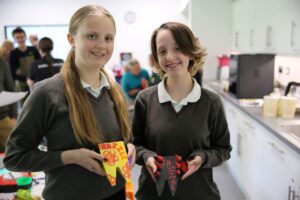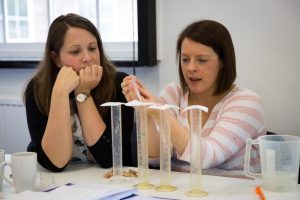Experiment with Kitchen Science
Wednesday 24th June 2020
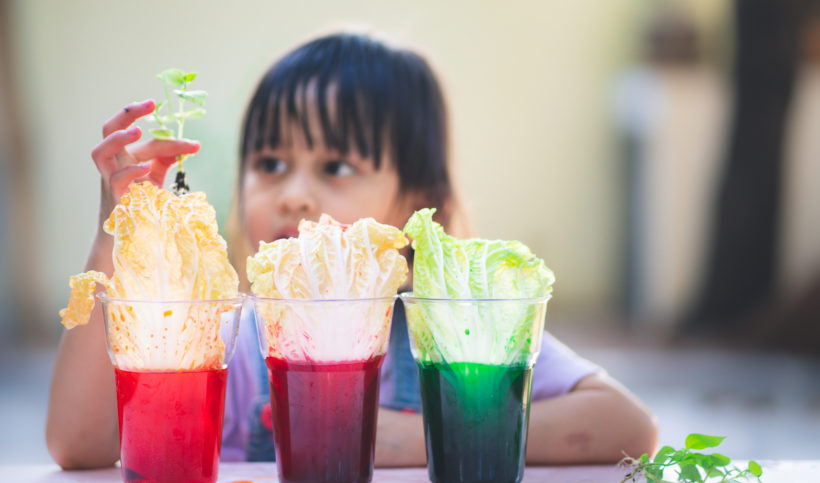
Have you’ve been inspired by our Big Science Event at home? Are you’re looking for investigation ideas for all the family? How about some fun kitchen science? From baking cakes to melting chocolate, our Science Oxford furloughed team have kept busy with projects at home. Head of all things tech, our Technology Projects Officer Sarah Townson has turned her love of inventing from micro:bits to munchies and batteries to bacteria, with a series of edible experiments in her kitchen. As she says “the science must go on!”
Remember, you can find some great ideas for science investigation questions just by looking in your kitchen cupboards – there’s no need to buy special ingredients. We’ve seen some brilliant investigations about the best biscuit for dunking, the wobbliest jelly, the toughest gummy bear and the runniest ketchup!
Make your own sourdough starter…
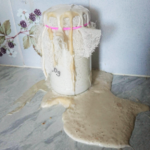
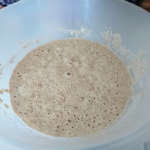
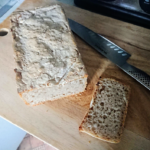
A sourdough starter is a mixture of strong white bread flour and water that you just leave out in your kitchen until it starts bubbling. When that happens, it means the wild yeast has colonised the mixture and it’s ready to make bread. Sarah has called her starter “Odo” and has been successfully baking her own bread for a few weeks now. She said the bread tasted better during the cooler weather when it was slower to rise but in the heat it only took an hour and the bread tasted much ‘yeastier’. You could try investigating different quantities of flour and water, or make a photo diary and observe what happens to the bread mixture each day for a week. Experiment in your kitchen and see what happens…
Experiment with sauerkraut…
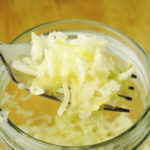 Sauerkraut is fermented cabbage that’s great for your gut and very tasty served with sausages! To make your own, you ferment finely cut cabbage in its own brine mixture – by simply rubbing it with salt and weighting it down to keep the air out. This allows the lactic acid bacteria to thrive which is good for your gut but keeps out the ‘wrong’ bacteria.
Sauerkraut is fermented cabbage that’s great for your gut and very tasty served with sausages! To make your own, you ferment finely cut cabbage in its own brine mixture – by simply rubbing it with salt and weighting it down to keep the air out. This allows the lactic acid bacteria to thrive which is good for your gut but keeps out the ‘wrong’ bacteria.
When fermented it has a very distinctive sour taste. The longer you leave it, the stronger the flavour. Perhaps you could test the flavour at different time intervals to see how it changes, or alter the amount of salt you use.
Try your hand at ginger beer…
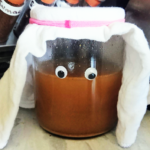 Ginger beer was Sarah’s next lockdown activity. She is using a ginger beer plant (you can buy online) but you can also make your own with sugar, ginger and yeast. Whatever you decide, the mixture simply ferments to create the fizz. You need to remember to let the excess gas out a couple of times a day to avoid explosions! When you’ve got a nice lot of bubbles, the ginger beer is ready to drink and you can then store it the fridge to prevent further fermentation.
Ginger beer was Sarah’s next lockdown activity. She is using a ginger beer plant (you can buy online) but you can also make your own with sugar, ginger and yeast. Whatever you decide, the mixture simply ferments to create the fizz. You need to remember to let the excess gas out a couple of times a day to avoid explosions! When you’ve got a nice lot of bubbles, the ginger beer is ready to drink and you can then store it the fridge to prevent further fermentation.
If you don’t fancy making your own fizzy ginger beer, how about investigating other drinks – you could find out which fizzy drink freezes the quickest, or one of our favourites – which drink dissolves egg shell the quickest?
Kombucha tea….
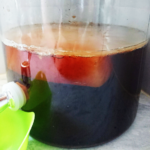 Kombucha is a delicious fermented drink made from sweetened tea. While mainstream fizzy drinks are a mixture of sugar, carbonated water and artificial flavours, kombucha’s carbonation comes from the fermentation of yeast and bacteria. The result is called a SCOBY – symbiotic culture of bacteria and yeast. Instead of tiny bouncing grains like the ginger beer plant, it’s a big weird slimy blob!
Kombucha is a delicious fermented drink made from sweetened tea. While mainstream fizzy drinks are a mixture of sugar, carbonated water and artificial flavours, kombucha’s carbonation comes from the fermentation of yeast and bacteria. The result is called a SCOBY – symbiotic culture of bacteria and yeast. Instead of tiny bouncing grains like the ginger beer plant, it’s a big weird slimy blob!
You can experiment with how long you leave your kambucha to get the taste you like best. You can mix it with a variety of teas for different flavours – Sarah loves tea, and her brew is a mixture of black Ceylon tea, and Chinese Oolong.
Yogi magic…
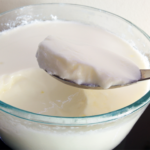 Sarah figured she could cut down on plastic waste by making her own yoghurt at home. She usually makes hers with semi-skimmed milk but has also tried whole milk (this made it thicker) and coconut milk (massive failure – remember not all science investigations turn out as you might expect!). All you need is milk and a spoonful of live yoghurt. It is the live cultures that turn the milk into yoghurt.
Sarah figured she could cut down on plastic waste by making her own yoghurt at home. She usually makes hers with semi-skimmed milk but has also tried whole milk (this made it thicker) and coconut milk (massive failure – remember not all science investigations turn out as you might expect!). All you need is milk and a spoonful of live yoghurt. It is the live cultures that turn the milk into yoghurt.
Once you’ve got the hang of it there are lots of tweaks you can do to subtly change the flavour and the thickness.
BBC Good Food has simple recipes for sourdough starters, sauerkraut, ginger beer and kambucha to get you started on your kitchen experiments:
https://www.bbcgoodfood.com/recipes
Of course, it’s important to wash your hands before preparing food! This reminds us of some more fantastic investigations – Which soap is the best for getting your hands clean? Does the 5-second rule really work? Or even –Does the topping affect which way the toast lands?
We look forward to seeing the results of your kitchen investigations. Tell us about your experiments and send a video, poster or photo diary to us by 13th July. To find out more about the Big Science Event at Home and how to enter, see here: scienceoxford.com/bigscienceeventathome.
There are loads of great prizes – you could win £500-worth of outdoor play equipment for your school, home science kits from The Curiosity Box or a family visit to the Science Oxford Centre when we reopen. Good luck!
 Sarah Townson,
Sarah Townson,
Science Oxford’s Technology Projects Officer

